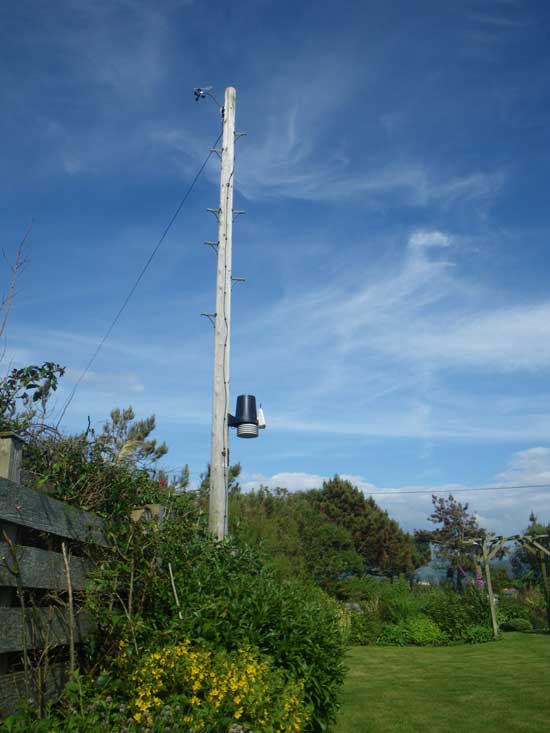Red Mason Bees
I’m pleased to announce that our bee hotel has some new residents.
Since installing it earlier in the year a few spiders have taken up residence in and around it, it’s roof has been used for sunbathing by fledgling sparrows, and the magpies stole a load of the bamboo canes and smaller sticks to add to their nest, but now we have some bees in it. I haven’t had chance to spend any time getting decent photos of them yet, but I did snap a few quick ones with my compact camera on Sunday whilst working in the garden. As far as I can tell, they look like Red Mason Bees
- Bee Hotel
- Solitary Bees
- Red Mason Bee
You can just about see one of them flying into a bamboo cane in one of the photos above and if you look closely you can see one inside one of the canes as well. There is also a cane at the bottom left with what looks like a store of pollen in it.
The Red Mason Bee
The Red Mason Bee is a small, solitary bee which nests in hollow plant stems, and also in holes in cliffs, or the crumbling mortar of old buildings. They are covered in dense gingery hair and the males are smaller than the females. The males also have a white tuft of hair on their faces. There are many similar species of masonry bee that are difficult to identify, but the Red Mason Bee is common in England and Wales, so I’m assuming that is what we have. If anyone knows differently from these terrible photos then let please correct me.
Once mated, each female Red Mason Bee builds its own nest and makes cells within it from mud and pollen. She lays a single egg in each cell until the cavity is full. The larvae hatch and develop, pupating in autumn and hibernating over winter before emerging from late March onwards. Red Mason Bees feed on pollen and nectar.
Hotel Improvements
It’s good to see them there even if they are quite common and has motivated me to chop up some more bamboo canes to continue filling the bee hotel with more cavities. I still haven’t got around to drilling holes in the blocks of wood in it yet, mainly because I don’t have any drill bits long enough and don’t really want to have to buy some just for this, so still need to borrow some.
It’s certainly encouraging to see that it is being used as it should be though as often these things are built and sit in the garden doing nothing. This project seems to have worked though, so not only was it fun to do with Morgan one weekend, but it is now adding to the biodiversity in our garden and hopefully helping bees and the rest of the local wildlife in the process. Good hey!?


















Lovely news! Thanks for the photos.